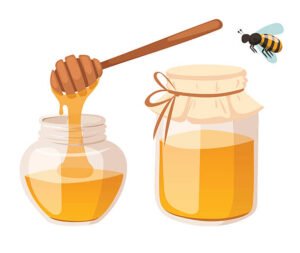Introduction to Bourbon-Aged Wine.
If you’ve ever been leaving a wine store and spotted a side display with a handful of mysterious bottles that appear like they were aged in bourbon barrels, those bottles may be bourbon barrel-aged wine.
There is no denying that this method of producing wine is at the center of much discussion. Some people see it as a trend, while others find it to be problematic.
What exactly is meant by “Bourbon Barrel Aged Wine”?
Although fresh American oak, neutral French wood, stainless steel tanks, concrete eggs, amphora, and a few other types of containers are often used for the aging of wine, bourbon barrels truly dig into a whole new area of aging possibilities.
Because bourbon barrels must be made from newly charred wood, they can only be used once before they are rendered unsuitable for the future maturing of bourbon. Because there is such a large supply of used barrels, the wine and beer industries have come up with some inventive ways to reuse them.
The classification of wine that has been matured in bourbon barrels is ambiguous since it is neither strictly a wine nor strictly a spirit. Like cabernet sauvignon, the red grapes that are selected to be aged in used bourbon barrels often have an intense flavor profile and astringent tannins.
As a rule, wines that have been stored in bourbon barrels are not vintage wines; rather, they are made by mixing together a number of wines from a variety of years in order to get the most intriguing expression possible.
The Key Differences Between Bourbon Barrels and Standard Aging Barrels
That means there is still wine in the barrel, right? Yes. Nevertheless, the barrel is in no way a neutral position.
The wine is significantly impacted by the char from the recent fire as well as the bourbon. The higher alcohol level of the wine is a direct result of the aging process, during which the wine absorbs any leftover hard liquor that has soaked the wood.
This leads to an increase in the wine’s overall alcohol percentage. The taste profile of these wines is also significantly altered by the bourbon that was poured into the barrels before them.
The prominent flavors of caramel, brown sugar, vanilla, oak, and maple combine with the dark fruit characteristics of the grapes, resulting in strong, lusciously full-bodied wines that often have a sweet smokiness that remains after the taste has been swallowed.
This strong touch in the cellar is a long cry from what is meant by “minimum intervention” in the production of natural wines. This is one of the contentious points at issue.
However, wines that have been matured in bourbon barrels aren’t really trying to be anything other than what they are.
This hybrid beverage is often more appealing to those who like to consume spirits rather than purist wine drinkers. They are often a spin-off label developed by big commercial wine firms in an effort to diversify their customer base and attract a new demographic.
Because these big-hitter drinks are more about the rich, smokey, vanilla flavors that are laced with cherry and blackberry, they are not a straightforward reflection of the grapes or the vineyard; rather, they are more of an infusion of sorts.
The Way To Present It
These heady, deeply textured wines contain high alcohol by volume (ABV) content and are best enjoyed slowly, much like a fine whiskey.
They have a distinct flavor character. A quick pour of three to four ounces, served at a temperature between 55 and 65 degrees Fahrenheit (13 and 18 degrees Celsius), is a decent starting point. This makes it possible for all of those massive smells to truly develop as you drink the beverage, providing you with the finest possible taste experience.
You might also try your hand at making the wine-like liquid into a cocktail by adding a dash of whiskey, some lemon juice, and some simple syrup to it.
This will help bring out the benefits of the barrel even more. Serve with ice in an old-fashioned glass for a seductive beverage to enjoy before or after supper.
Hints on Storage
Even though the wine has matured in bourbon barrels and taken on some genuine whiskey vibes, it is still fermented grape juice, and once it has been opened, it will not keep for years and years as a decent bourbon would.
Before you crack up your bottle of bourbon barrel-aged wine, be sure to keep it in a cool, dark spot that is out of the way of temperature swings and light.
When you are ready to use it, divide the process of opening it up across five separate days and store it in the refrigerator in the meantime to prevent any more oxidation from occurring.
To Drink or Not To Drink
Ask yourself a few questions if you still do not have a clear understanding of this wine type that has robust flavors if you still do not.
Do you normally like drinking wines that have wood in them? Do you enjoy the way wine tastes when it has vanilla in it?
Do you have a preference for traditional bourbon? If you answered yes to any of these questions, there is a strong probability that you will appreciate drinking a wine that has matured in a bourbon barrel.
30 Interesting Wine Facts For Future Connoisseurs
How To Enjoy And Appreciate White Wine
Rhine Wines: A Taste Of Germany Via Exploration
Authentic Glühwein Recipe For German Christmas Wine
Why Chablis Is A Must-Try When It Comes To Chardonnay
What’s A Variety? Definitions In The Wine World



